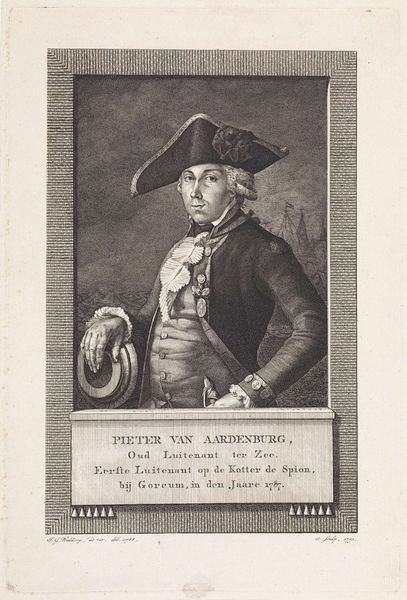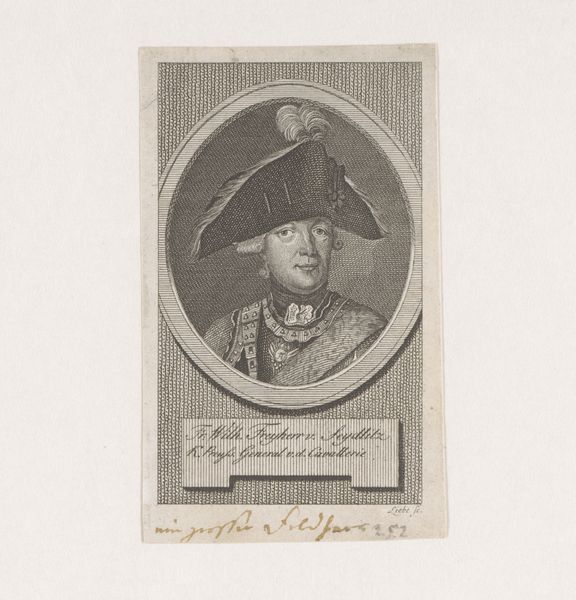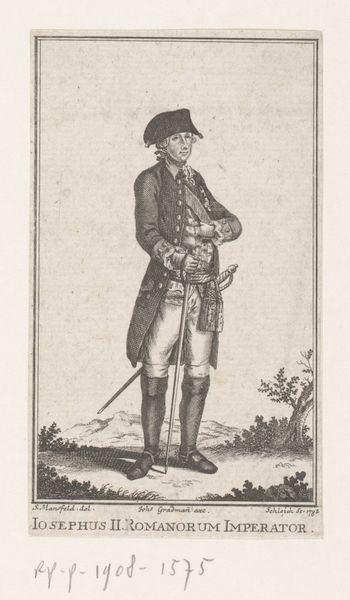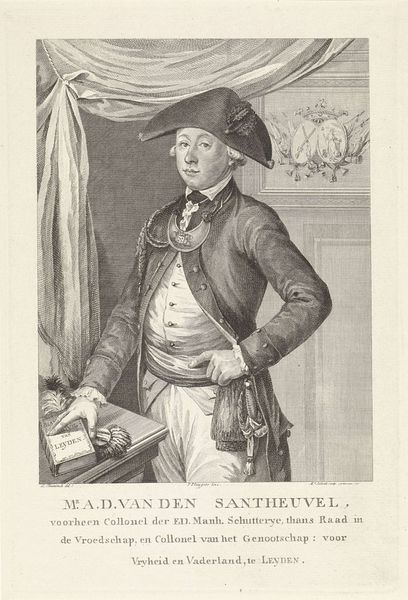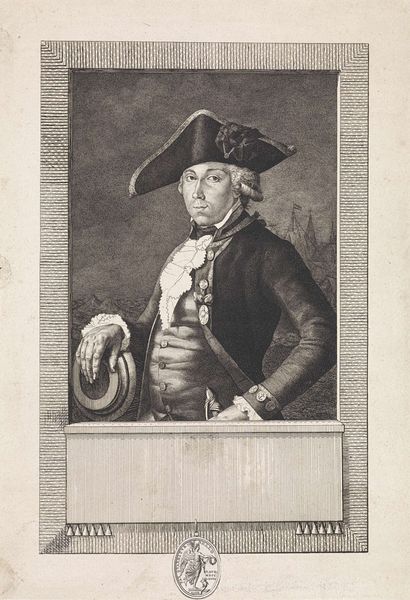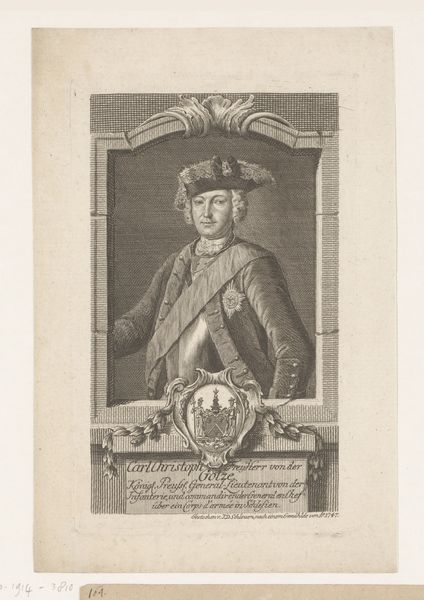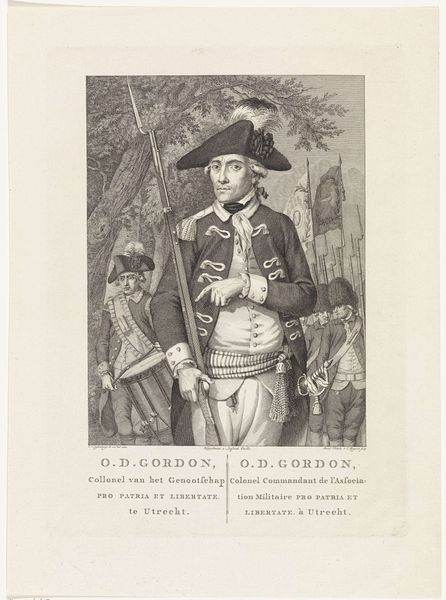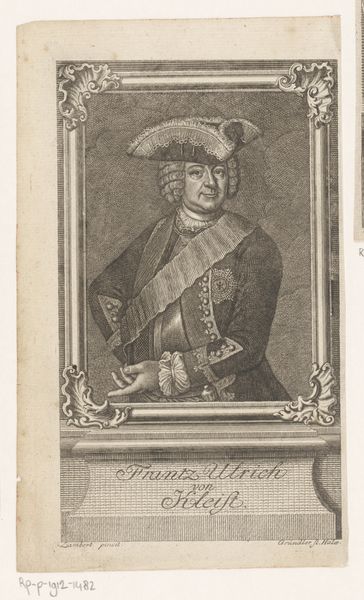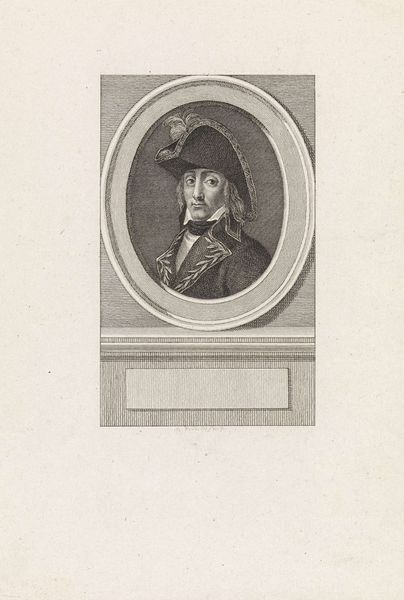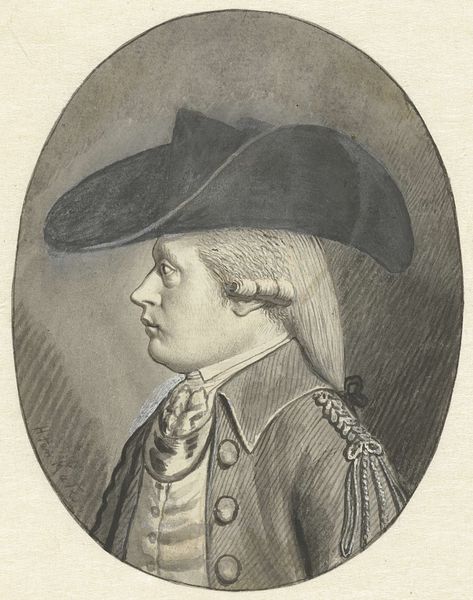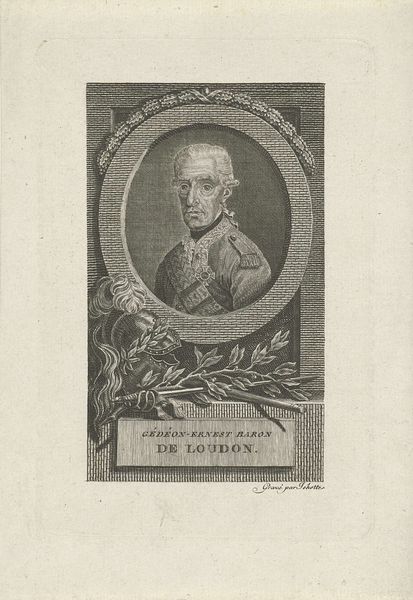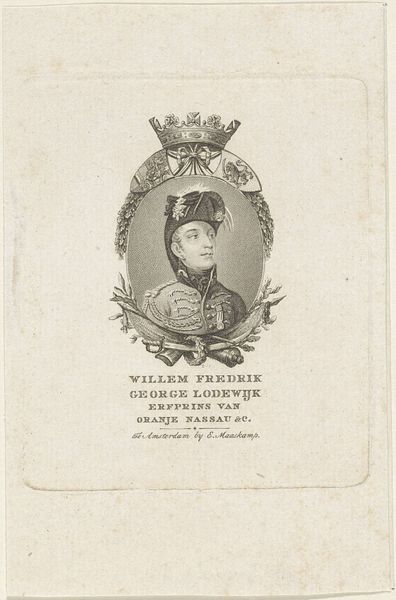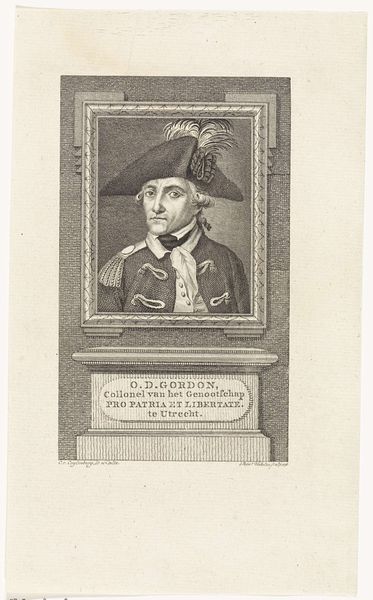
print, engraving
#
portrait
#
neoclacissism
# print
#
old engraving style
#
geometric
#
history-painting
#
engraving
Dimensions: height 350 mm, width 230 mm
Copyright: Rijks Museum: Open Domain
Curator: Welcome. We’re standing before an engraving from around 1780-1788, "Portret van Willem V, prins van Oranje-Nassau," attributed to an anonymous artist and residing here at the Rijksmuseum. Editor: My first impression is how precise and almost regimented the lines are. It feels very controlled, formal even. Is this typical for portraits of this period? Curator: Indeed. The clean lines, the geometric precision, and the rather stoic demeanor all point toward the prevailing Neoclassical style of the time, which favored order and reason. It's all about projecting authority, visually reinforcing his status. Editor: You can see it not only in his bearing but in all the ornamentation of the clothing. Each button, tassel, fold…it looks incredibly laborious. You get a real sense of how material processes communicate that status. Curator: Absolutely. It was essential for rulers like Willem V to visually embody power and legitimacy, especially given the growing social and political unrest of the late 18th century. Think about the cost of those luxurious garments; they underscore the vast resources under his control. Editor: Speaking of unrest, this engraving – and the likely distribution of prints made from it – suggests a strategic deployment of imagery. Is this portrait part of a larger campaign to maintain control amidst rising tensions? Curator: Precisely. Printmaking allowed for wider dissemination of the Stadtholder’s image, presenting a carefully constructed persona to reinforce loyalty among a diverse populace, or at least attempt to do so! Editor: It’s amazing how much information is embedded in the image through something as seemingly simple as lines etched into a plate, reflecting production processes and ultimately, a concentrated performance of power. Curator: I agree. Examining works like this allows us to better comprehend the multilayered dynamic between representation, material production, and social structures. Editor: A look at this print offers so much: the artist's tools and techniques to the shifting sands of socio-political narratives in Dutch history.
Comments
No comments
Be the first to comment and join the conversation on the ultimate creative platform.
